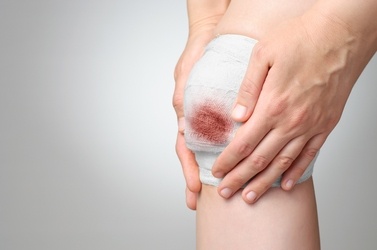Everyone gets a wound or injury from time to time, and in the vast majority of cases, these wounds heal without incident. However, for some, such as those suffering from diabetes, proper healing of wounds becomes a tad bit trickier. In fact, as many as 2 percent of the nation’s population suffers from a wound that simply will not heal on its own. And, when such a case occurs, proper medical treatment is crucial to prevent infection and other medical complications.
So, how can a patient be sure that a wound necessitates medical intervention? While the best course of action is to see a physician any time a potential non-healing wound is in question, there are some tell-tale signs that patients can watch for.
Excessive Wound Pain
Naturally, some pain from a wound is to be expected. However, it should be temporary and manageable using traditional pain relief methods such as ibuprofen. If pain continues or even worsens over time, it’s time to see a doctor.
Wounds that have a Foul Smell
If a wound continues to emit an unpleasant odor, even with proper cleaning and care, there may be cause for concern. While any wound can be accompanied by a smell, most individuals can recognize one that is overly strong or just isn’t quite right and may be a sign of infection.
Wounds that Take Longer than 30 Days to Heal
The simple passing of time is often the best indicator that a wound requires additional attention. If a wound has not healed or progressed after 30 days, medical help should be sought quickly. While some wounds will take longer than this time period to heal, it is a good benchmark at which to have your physician begin monitoring progress.
Wounds that Swell or Have Discharge
Redness and swelling are frequently seen in chronic, non-healing wounds. And, while these may be normal in the early stages of healing, a wound should never regress. If these factors worsen over time, it is almost always an indicator of an underlying issue. Likewise, a wound may bleed or have a clear discharge, but if it is accompanied by a thicker or yellowish discharge, it is important to have it checked immediately.
Non-healing wounds can lead to a number of painful and dangerous complications for the patient. Monitoring a wound’s progress and keeping a watchful eye for any signs of trouble are critical to ensure proper healing. Fortunately, there are effective treatment options available such as hyperbaric oxygen therapy which can help speed the healing of chronic wounds and minimize their impact to a patient’s health and wellbeing.
To learn more about hyperbaric oxygen therapy and non-healing wound care, contact the Lane Wound Care & Hyperbaric Oxygen Therapy Center:
Lane Wound Care & Hyperbaric Oxygen Therapy Center
4917 West Park Dr.
Zachary, LA 70791
(225) 658-4110




